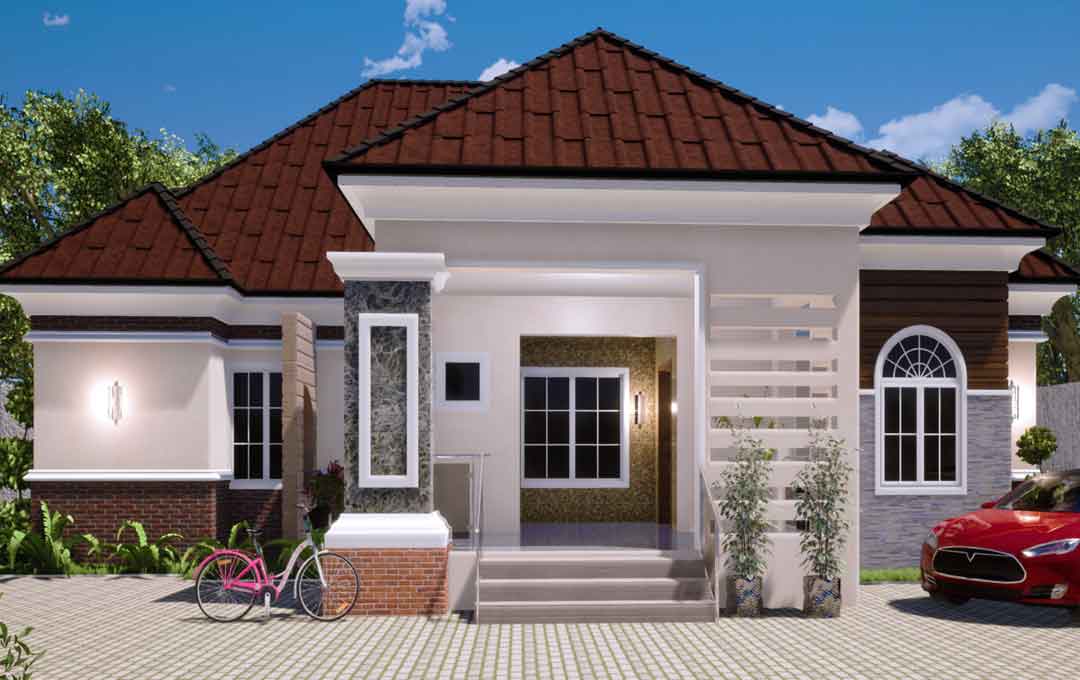Top 10 3D House Design Software

Top 10 3D House Design Software: Unraveling the Pros and Cons
Are you ready to bring your dream home to life in three dimensions? Look no further! I have compiled a list of the ten best 3D house design software, each with its unique set of features, strengths, and drawbacks. Whether you’re a professional architect or a passionate DIY enthusiast, these tools will help you visualize and create stunning house plan designs.
 Certainly! 3D house design software allows you to create and visualize architectural designs in three dimensions, helping you to plan and visualize the layout, structure, and aesthetics of a building before construction.
Certainly! 3D house design software allows you to create and visualize architectural designs in three dimensions, helping you to plan and visualize the layout, structure, and aesthetics of a building before construction.
The cost of 3D house design software can vary significantly based on factors such as the software’s capabilities, licensing type, and whether it is intended for professional use or DIY enthusiasts.
Step by step Approach to using 3D house design software typically involves the following the listed method below.
Interface and Setup:
When you open the software, you’ll be greeted with the user interface, which may vary depending on the software you’re using. Usually, you’ll find a workspace where you can create your design and a set of tools, menus, and panels to control various aspects of the software.
Creating the Floor Plan:
The first step is to create the basic floor plan of your house. This involves drawing walls and adding doors, windows, and other architectural elements. Most software provides snap-to-grid or measurement tools to ensure accurate dimensions. You can typically work in 2D mode during this step.
Extrusion and Modeling:
Once the floor plan is ready, you’ll transition to the 3D mode, where you can extrude the 2D elements to create the height and depth of the walls, floors, and ceilings. In this step, you’ll convert the flat floor plan into a three-dimensional representation.
Adding Details and Features:
With the basic structure in place, you can start adding more details and features to your design. This includes furnishing the interior, adding fixtures, stairs, and other elements that will bring the house to life. Many software options have extensive libraries of pre-built objects and textures that you can use.
Applying Materials and Textures:
To make your design more realistic, you can apply materials and textures to different surfaces. For instance, you can assign wood textures to floors, brick textures to walls, and so on. This helps you visualize how the materials will look in the final construction.
Lighting and Environment:
Adding lighting is crucial for creating a realistic and visually appealing representation of your house. You can place artificial lights and set the time of day to see how natural light interacts with your design. Some software even allows you to simulate real-world lighting conditions for more accurate visualizations.
 Rendering:
Rendering:
Rendering is the process of converting your 3D model into a high-quality image or video. Depending on the complexity of your design, rendering can take some time. The software uses advanced algorithms to calculate how light interacts with the materials, resulting in a photorealistic image or video.
Walkthrough and Visualization:
Many 3D house design software allows you to take a virtual walkthrough of your design. This feature enables you to experience the house from different perspectives and evaluate how the design feels in real life. Some software may even support virtual reality (VR) integration, taking visualization to a whole new level.
Collaboration and Documentation:
For professionals, collaboration is essential. Some software supports collaboration features, allowing multiple users to work on the same project simultaneously. Additionally, the software can generate detailed construction documentation, including plans, elevations, and sections, that can be used for construction purposes.
Finalization and Export:
Once you are satisfied with your 3D house design, you can save or export your project in various formats. You may export 3D models, images, and videos, or even share interactive walkthroughs with clients or stakeholders.
List of the Top 10 Best 3D House Design Software, their estimated cost, pros and cons
SketchUp:
This is an intuitive and user-friendly software that caters to both beginners and experienced designers. Its extensive library of 3D models and plugins makes it easy to create intricate architectural designs. While SketchUp offers a straightforward interface and is great for quick sketches, it might lack some advanced features and precision tools found in other software.
SketchUp offers a free version known as SketchUp Free, which provides basic 3D modeling capabilities. For more advanced features, there is SketchUp Pro, which used to be priced at around $349/year for a perpetual license. It may also offer a subscription-based pricing model.
AutoCAD Architecture:
This powerful tool is used extensively in the architectural industry. It offers precise drafting and detailing capabilities, making it ideal for professionals. Its 3D modeling features allow users to create realistic representations of buildings. However, its steep learning curve and expensive pricing might be overwhelming for beginners and hobbyists.
AutoCAD Architecture is part of the AutoCAD suite of software offered by Autodesk. Autodesk typically offers subscription-based plans for its products, and the cost for AutoCAD Architecture can range from $1,575 to $2,790 per year, depending on the subscription term and additional features.
Revit:
Developed by Autodesk, Revit is a Building Information Modeling (BIM) software that streamlines the design process. It focuses on collaborative work, allowing multiple team members to work on a project simultaneously. The intelligent parametric components enable automatic updates throughout the design. Nonetheless, its complexity and high resource requirements might be challenging for less powerful hardware.
Like AutoCAD, Revit is also developed by Autodesk and follows a subscription-based pricing model. The cost for a Revit subscription can range from $1,890 to $2,250 per year, depending on the subscription term and licensing options.
Chief Architect:
 This software is designed for both professionals and enthusiasts looking to create detailed house designs. It provides a vast library of pre-built objects and materials, making the design process faster. It offers realistic rendering and 3D walkthroughs, but the software’s higher cost could be a deterrent for casual users.
This software is designed for both professionals and enthusiasts looking to create detailed house designs. It provides a vast library of pre-built objects and materials, making the design process faster. It offers realistic rendering and 3D walkthroughs, but the software’s higher cost could be a deterrent for casual users.
Chief Architect has different versions, including Chief Architect Premier, Interiors, and Home Designer. The Home Designer Suite, suitable for DIYers, might cost around $129 to $199, while Chief Architect Premier, tailored for professionals, can range from $1,995 to $2,388.
ArchiCAD:
This design software is another BIM software that emphasizes collaboration and efficiency. It boasts excellent 3D modeling capabilities and offers real-time rendering for instant feedback. However, its advanced features may be overwhelming for beginners, and it may require substantial hardware resources.
ArchiCAD, developed by Graphisoft, is available through a subscription-based model. The cost can range from $550 to $750 per month, depending on the subscription plan and licensing options.
Home Designer Suite:
This user-friendly software caters to beginners and DIYers. Home Designer Suite allows easy creation of 3D home designs, interior layouts, and landscape plans. While it lacks the advanced features of professional tools, it is perfect for homeowners seeking to visualize their renovation or remodeling projects.
The cost for Home Designer Suite, developed by Chief Architect, can be around $129 to $199, offering a more budget-friendly option for 3D house design for DIYers.
Sweet Home 3D:
Sweet Home 3D is an open-source software that offers a simple interface and ease of use. It’s a great option for beginners and hobbyists. However, it might not be as feature-rich or offer as much precision as other professional tools.
it is open-source software and is available for free, making it an excellent choice for budget-conscious users.
TurboCAD:
This is a versatile software that provides both 2D and 3D design capabilities. It offers a wide range of features at an affordable price, making it suitable for various skill levels. However, some users may find the interface less intuitive compared to other software on this list.
TurboCAD offers different editions, and the pricing can vary. The TurboCAD Deluxe version may cost around $129 to $149, while the more advanced TurboCAD Pro Platinum can be priced at approximately $1,500 to $1,700.
Blender:
Originally developed for 3D animation, Blender has evolved to include robust modeling and rendering capabilities. It is a free and open-source option for creating 3D house designs. However, its steep learning curve may deter beginners.
Blender is free and open-source software, making it accessible to all users without any cost.
3ds Max:
Primarily used in the entertainment industry, 3ds Max also finds applications in architectural visualization. It offers advanced modeling, rendering, and animation features. Yet, its complexity and high price point might not make it the first choice for house design purposes.
3ds Max is a professional-grade software developed by Autodesk. The cost can range from $1,620 to $2,310 per year, depending on the licensing options and subscription term.
In conclusion,
Remember, 3D house design software can vary in complexity, features, and user-friendliness. Some software is more suitable for professionals with advanced needs, while others are designed to be more accessible to beginners and DIY enthusiasts. As you gain experience, you can explore more advanced tools and techniques to refine your designs further.
 Keep in mind that software companies may offer discounts, promotions, or different pricing plans, especially for educational users, non-profit organizations, or businesses with multiple licenses. Always check the latest pricing and licensing options directly from the software developer’s official website for the most accurate and up-to-date information.
Keep in mind that software companies may offer discounts, promotions, or different pricing plans, especially for educational users, non-profit organizations, or businesses with multiple licenses. Always check the latest pricing and licensing options directly from the software developer’s official website for the most accurate and up-to-date information.
Finally, the best 3D house design software for you depends on your skill level, budget, and project requirements. While professional architects might prefer AutoCAD Architecture, Revit, or ArchiCAD for their advanced features and collaboration capabilities, SketchUp, Chief Architect, and Home Designer Suite cater to those seeking ease of use and a more affordable option. Sweet Home 3D, TurboCAD, Blender, and 3ds Max offer various alternatives for different user preferences, but they may require more time and effort to master. Choose wisely, and let your creativity flourish as you bring your dream home to life in stunning 3D.





